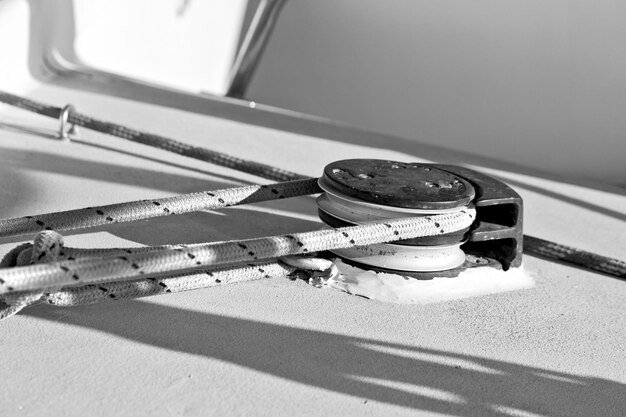Financial Pitfalls: A Buying Guide Case Study for Smart Choices

Buying Guides: This case study delves into the costly repercussions of selecting the wrong product, providing insights and guidance to help consumers make informed purchasing decisions and avoid financial strain.
Navigating the marketplace can be tricky, and sometimes the allure of a deal leads to a purchase we later regret. Dive into this Buying Guides: The Financial Impact of Choosing the Wrong Product – A Case Study, designed to shed light on how poor purchasing decisions can impact your wallet.
Understanding the True Cost of a Bad Purchase
Every purchase, whether big or small, carries a financial implication. We often focus on the immediate price tag, but the true cost can extend far beyond that initial expense. Understanding these hidden costs is crucial for making financially sound decisions.
Hidden Costs Beyond the Price Tag
The actual cost of an item isn’t always what you see at the store. Maintenance, repairs, and even the expense of disposal contribute to the total financial burden.
Opportunity Cost: What Else Could You Have Bought?
Every dollar spent is a dollar not available for other investments or purchases. Consider what you’re giving up when you choose one product over another.
- Maintenance Fees: Some products require regular upkeep, like filter replacements or professional servicing.
- Repair Expenses: Items prone to breaking down can lead to unexpected repair bills.
- Disposal Costs: Getting rid of unwanted items can sometimes incur a fee, especially for electronics or appliances.
- Energy Consumption: Appliances and electronics can significantly impact your utility bills.
Ignoring these factors can lead to a distorted view of a product’s affordability. Always factor in the long-term financial implications.
The Case of the Budget Treadmill: A Cautionary Tale
Let’s consider a real-world example: a budget treadmill. Attracted by a low price, many consumers opt for inexpensive models marketed as a cost-effective way to stay fit. However, the initial savings can quickly evaporate.
The Allure of Low Prices and Marketing Hype
Marketing often emphasizes attractive entry points, but fails to highlight the long-term drawbacks of cheaper alternatives.
Short-Term Savings vs. Long-Term Expenses
While the upfront cost is lower, budget treadmills often suffer from poor construction and unreliable components, leading to frequent breakdowns and expensive repairs.

Over the course of a few years, these repair costs can easily exceed the price of a higher-quality treadmill. Worse, the treadmill might become unusable, forcing you to purchase a replacement sooner than expected. This cycle of buying cheap, repairing frequently, and replacing early is a financial drain.
Quantifying the Financial Impact: Repair Bills and Replacements
Let’s break down the numbers. Suppose a budget treadmill costs $300. Over three years, it requires $100 in repairs each year, totaling $300. At the end of the period, it’s beyond repair and needs to be replaced.
Calculating Total Cost of Ownership
Adding repair and replacement costs to the initial purchase price exposes the true financial burden of a seemingly affordable product.
The Value of Investing in Quality Upfront
A more expensive, durable treadmill might cost $800 upfront but requires minimal maintenance and lasts for ten years. In the long run, it proves to be far more economical.
- Initial Cost: Budget treadmill ($300) vs. Quality treadmill ($800)
- Annual Repairs: Budget treadmill ($100) vs. Quality treadmill ($0)
- Lifespan: Budget treadmill (3 years) vs. Quality treadmill (10 years)
- Replacement Cost: Budget treadmill (every 3 years) vs. Quality treadmill (none needed)
By calculating the total cost of ownership, consumers can make informed decisions that prioritize long-term value over short-term savings.
Beyond Monetary Costs: The Impact on Time and Stress
The financial burden is only part of the story. Defective products also consume your time and increase your stress levels. Dealing with repairs, returns, and replacements can be a major hassle.
The Time Investment in Dealing with Faulty Products
Countless hours can be spent on customer service calls, online forums, and trips to repair shops.
The Frustration Factor: Stress and Inconvenience
The disappointment of owning a malfunctioning product can negatively impact your overall well-being.

This hidden cost should be factored into your buying decisions. Consider the potential for aggravation and time wasted when choosing between a cheap product and a reliable one.
Strategies for Making Informed Purchasing Decisions
Fortunately, there are steps you can take to avoid making costly mistakes. Research, comparison, and realistic expectations are key.
The Importance of Thorough Research
Before making a purchase, gather information from reliable sources. Online reviews, expert opinions, and consumer reports can provide valuable insights.
Comparing Products and Pricing Wisely
Don’t just focus on the lowest price. Compare features, warranties, and expected lifespans.
- Read Reviews: Look for unbiased opinions from everyday users.
- Check Warranties: A good warranty can protect you from repair costs.
- Consider Brand Reputation: Established brands often have a track record of quality.
By taking a proactive approach, you can minimize the risk of buyer’s remorse and maximize the value of your purchases.
Preventing Future Financial Setbacks in Buying Guides
Looking forward, it’s essential to adopt strategies that continually improve buying choices. Financial literacy combined with practical shopping habits is vital.
Building Financial Literacy
Enhance your understanding of personal finance to evaluate purchases effectively. Being financially savvy allows one to easily discern good deals from potential traps.
Cultivating Practical Shopping Habits
Adopt routines that reinforce smart buying, like planning purchases and sticking to a budget. This prevents impulsive buys that often lead to financial regrets.
By integrating these habits, consumers become more astute and less susceptible to expensive errors, securing long-term savings and smarter financial decisions.
| Key Point | Brief Description |
|---|---|
| 💰 Total Cost | Considers all expenses over the product’s life, not just the initial price. |
| 🕰️ Time & Stress | Faulty products cost time in repairs plus emotional stress. |
| 🔎 Research | Gather info from reviews & experts before you buy. |
| 🛡️ Warranties | A good warranty protects against repair expenses. |
Frequently Asked Questions
▼
Total cost of ownership includes not only the purchase price but also additional costs like maintenance, repairs, and eventual disposal, providing a comprehensive view of the financial impact.
▼
Read reviews from various sources, check consumer reports, and seek advice from experts. Understand both the positives and negatives to make an informed decision.
▼
Warranties cover potential repair costs and signal the manufacturer’s confidence in the product’s durability. They offer peace of mind and financial protection against defects or early failures.
▼
Stress from using a faulty product can lead to frustration and reduced quality of life. Consider the emotional toll when selecting products, prioritizing reliability and positive user experiences.
▼
Understanding financial principles enables buyers to assess the true costs and benefits of a purchase, leading to better decisions that align with long-term financial health and savings goals.
Conclusion
The financial impact of choosing the wrong product can be significant, extending beyond the initial price tag to include repair costs, time wasted, and emotional stress. By researching thoroughly, comparing options wisely, and understanding the true cost of ownership, consumers can make more informed choices that lead to long-term savings and satisfaction.





